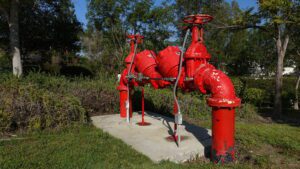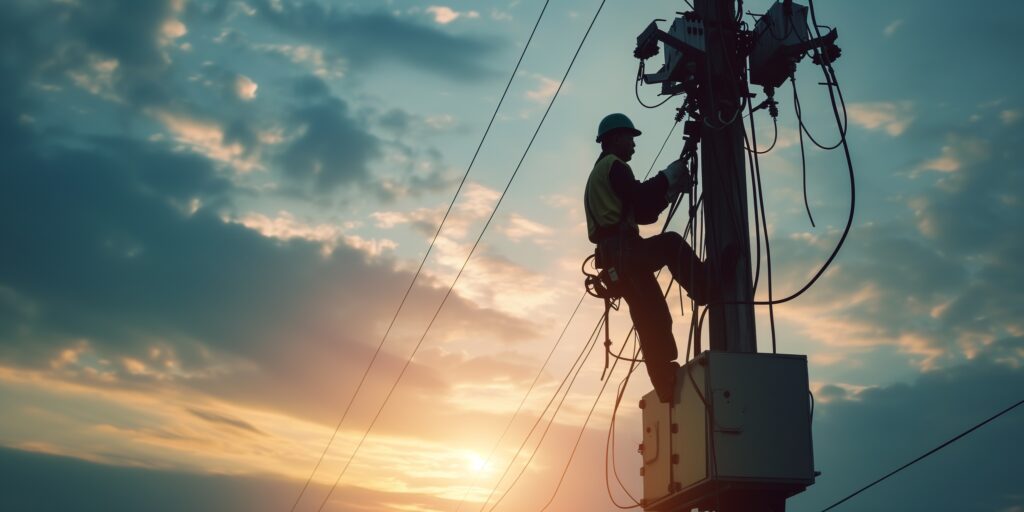Important to understanding work cycles is recognizing the fundamental differences between linear and vertical assets, each presenting unique management challenges while requiring coordinated oversight.
Linear Assets: Managing Extended Infrastructure Networks
Linear assets are comprised of the vast networks that connect communities and enable service delivery, including:
- Water and wastewater treatment plants
- Pumping stations and lift stations
- Municipal buildings and administrative facilities
- Public safety facilities (fire stations, police stations, emergency operations centers)
- Parks and recreation facilities (community centers, sports complexes, maintenance facilities)
- Public works and fleet maintenance facilities
- Solid waste transfer stations and recycling centers
- Traffic control centers and signal equipment hubs
Linear assets have unique challenges, including distributed risk profiles, complex access requirements, and interdependent failure modes. A single pipeline segment failure can impact service across entire regions, while maintenance activities often require extensive coordination with multiple stakeholders. Traditional asset management approaches struggle with the geographic complexity and interconnected nature of linear infrastructure.
 Backflow prevention exemplifies the complexities of linear asset management, as it requires managing thousands of devices across extensive water distribution networks. KloudGin’s backflow prevention and cross-connection control solution consolidates cross-connection control data, including service point information, device testing records, and compliance documentation, in a centralized system that integrates seamlessly with GIS mapping. This unified approach enables water utilities to track compliance across their entire linear asset network while coordinating with contractors and regulatory authorities.
Backflow prevention exemplifies the complexities of linear asset management, as it requires managing thousands of devices across extensive water distribution networks. KloudGin’s backflow prevention and cross-connection control solution consolidates cross-connection control data, including service point information, device testing records, and compliance documentation, in a centralized system that integrates seamlessly with GIS mapping. This unified approach enables water utilities to track compliance across their entire linear asset network while coordinating with contractors and regulatory authorities.
Vertical Assets: Concentrated Critical Infrastructure
Vertical assets represent the concentrated facilities and equipment that generate, process, and control services:
- Generation facilities and substations
- Treatment plants and pumping stations
- Communication towers and data centers
- Maintenance facilities and storage areas
- Control centers and administrative buildings
 Vertical assets typically have significant and concentrated value, complex technical systems, and centralized risk profiles. These facilities often house millions of dollars’ worth of equipment within relatively small geographic areas, requiring specialized maintenance expertise and sophisticated condition monitoring. While easier to access than linear assets, vertical facilities often involve complex safety protocols and adherence to regulatory requirements.
Vertical assets typically have significant and concentrated value, complex technical systems, and centralized risk profiles. These facilities often house millions of dollars’ worth of equipment within relatively small geographic areas, requiring specialized maintenance expertise and sophisticated condition monitoring. While easier to access than linear assets, vertical facilities often involve complex safety protocols and adherence to regulatory requirements.
The Advantage of a Unified Asset Strategy
The benefits of a unified EAM and FSM platform become evident when managing both linear and vertical assets within integrated operational strategies. Daily maintenance activities at vertical asset facilities must consider their impact on connected linear networks. Service calls to linear infrastructure often require resources and expertise housed at vertical facilities. Construction projects frequently span both asset types, requiring well-coordinated planning and execution.
Organizations managing linear and vertical assets in separate systems miss critical operational insights. In comparison, a platform that unifies both enables comprehensive performance monitoring, optimized resource allocation, and coordinated response strategies that consider the interdependencies between all asset types.
This is Part 3 of our series “A Single Face of Work®: Unifying All Work And All Assets on a Single Platform.” Read Part 2 here.

About the Author
Michael Levi currently serves as Vice President of Marketing at KloudGin Inc, where he oversees product marketing strategy and execution. A transformative leader in energy systems and utility operations, he has pioneered innovative approaches across power generation, renewables, and enterprise technology for more than 25 years.

